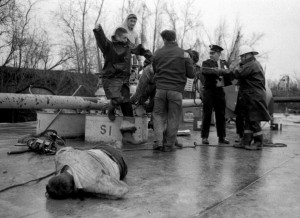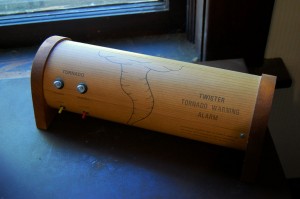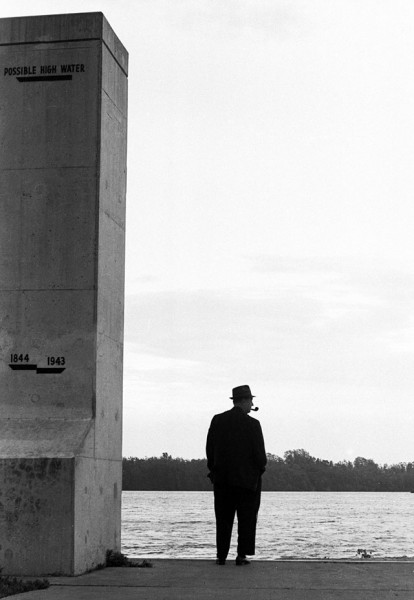Everyone’s been shot by Frony
There’s probably nobody who lived in Southeast Missouri between 1927 and 1986 who hadn’t had his or her picture taken by One-Shot Frony.
G.D. Fronabarger started working at The Southeast Missourian in 1927 and stayed 59 years.
When I knew him, he was called One-Shot because he seldom took more than one picture per assignment. He’d line up a group shot with 50 people in it, growl through the cigar clenched between his teeth, “Don’t blink. I’m taking one shot,” push the shutter release and walk off.
He and I had a somewhat tense relationship in our early days. I was a reporter who got paid $5 for each shot that ran… when one ran. Because most of the staffers liked my candid style, as opposed to Frony’s more formal posed pictures, they’d connive to slip assigments to me on days when they knew Frony wasn’t available. He was gruff with everybody, but it always felt like he was a little more gruff with me.
Frony defended a controversial picture
 That all changed after I went out on an early-morning spot news run Dec. 5, 1966.
That all changed after I went out on an early-morning spot news run Dec. 5, 1966.
A 19-year-old and another man were cleaning the inside of a closed barge with gasoline when they were overcome by the fumes. I took a front-page picture of the young man laying face-down on the cold barge deck while rescue workers lifted his partner out of the hold.
It was the first body I had ever seen outside of a funeral home – certainly the only one of someone my age – and it was one of the few I can recall The Missourian running. Seeing that, and writing the obituary of a kid I went to kindergarten with, showed me just how fragile life is. I never forgot it.
Predictably, the paper came in for a lot of criticism
I was surprised one day when I was in a coffee shop and overheard Frony defending “the kid” who took the picture to someone who was bending his ear. After that, Frony treated me a lot differently. Maybe he felt like I had paid my dues and had what it took to be a real newspaper photographer.
Fred Lynch is preserving Frony’s early work
I dropped in to see Fred Lynch, a Missourian photographer since 1975. I had seen his work over the years, but had never met him. While we were sharing war stories, he said that he was involved in a project to digitize all of Frony’s 4×5 negatives.
Frony was an early adopter of 35mm technology. He showed me a long telephoto lens one afternoon, and I asked what he planned to use it for.
“I’m going to stand here and shoot corruption in Illinois,” he groused, without a hint of a smile.
Fred pulled out a series of prints that showed a completely different side of Frony, the photographer. There were images that would qualify as art in any museum. He managed to capture a portrait of his era in a way I hope my pictures do.
I’m not sure how The Missourian will ultimately use the photos, but I’ll be first in line to buy the book if they publish one.
Frony’s Twister Tornado Warning Alarm
 I happened to be in town when many of Frony’s possessions were auctioned off. (A copy of the picture of him on the river front was one of the things that sold. I was touched that he had hung onto it for all those years.)
I happened to be in town when many of Frony’s possessions were auctioned off. (A copy of the picture of him on the river front was one of the things that sold. I was touched that he had hung onto it for all those years.)
One thing that caught my eye was a Twister Tornado Warning Alarm. It was a quirky device that had a metal can in the middle. If the air pressure dropped suddenly, a buzzer would sound and a light would light. It had no practical use, but it was neat.
Auctioneer sweetened the deal
I bid two or three bucks and figured I had a clear shot. The auctioneer, though, wanted to boost the bid, so he threw in two pairs of Frony’s old shoes. One was an orangish color not seen in nature. NOW folks were getting interested. I think I finally had to go to five or seven bucks for my trophy, plus the bleeping shoes.
I felt foolish enough buying the Twister Torado Warning Alarm (which, by the way, is on permanent loan to the Mark Steinhoff Memorial Museum in St. Louis), the shoes made me feel REALLY foolish.
Frony Shoes are still in service
 It turned out that Kid Matt, who was in high school at the time, thought they were the most comfortable things he’d ever found. And, showing that he had inherited his fashion sense from me, he insisted on wearing them in public.
It turned out that Kid Matt, who was in high school at the time, thought they were the most comfortable things he’d ever found. And, showing that he had inherited his fashion sense from me, he insisted on wearing them in public.
I asked him the other night what ever happened to his Frony Shoes.
He was more than happy to pull them out of his closet to pose for this picture.
I guess you could say that the Steinhoffs have walked a mile in Frony’s shoes.



Matt, if you ever need to find another line of work, I’m pretty sure that you can check shoe/leg model off your list.
Adam
Fred Lynch weighed in with a couple of clarifications and additions:
1. All of Frony’s 4×5 negatives have been scanned by an intern (wow, I wish I could find one of those).
2. Fred’s vehicle for introducing Frony’s photos to a new audience is his blog, F8 and Be There in The Southeast Missourian. It’s worth signing up for the RSS feed so you don’t miss any.
[Editor’s note: the name of Fred’s blog is taken from the classic answer a photographer gave when asked he managed to take a spectacular spot news photo: “F/8 and be there.”]
“With help from our librarian, Sharon Sanders, I am presenting a historical look at Cape Girardeau through Frony’s lens. I have begun with buildings from the 40s and 50s which no longer exist. Any news stories or historical information is included in the blogs,” Fred wrote.
I’m glad to see The Missourian is actively preserving the community’s history by digitizing the work of someone who documented the big and little stores of Southeast Missouri for more than half a century.
Thanks for letting me know about this blog, Ken. I’m enjoying the photos. This is a good story, too. But did Mr. Frony have a first name?
Spokesrider,
Frony’s first name was Garland, but he normally used his initials, G.D. Fronabarger.
Everybody in town knew him by his nickname, though.
Glad to see you made it over here. I’ve enjoyed reading your accounts for years at
http://www.spokesrider.com/
Andy Scully chimed in with this comment:
I recognized the police officer at the scene of the barge asphyxiation fatalities. He was Eugene Huttegger. In addition to being a full-time Cape policemen, Gene also commercially fished the Mississippi River.
Trying to find pictures of the 1960 senior class year book.
Help if you can
Thanks
Leroy
Classmates.com has CHS yearbooks from 1926, 1969, 1972, 1976, and 1981.
It also has a 1959 College High yearbook.
Amazon.com lists Central yearbooks for 1926, 1972, 1976, and 1981.
I have Girardots from 1962-66 and my dad’s book from 1934.
Mr. Fronabarger and my uncle Jim Haman (Kassel’s Studio/Haman’s Kastle) were good friends because they were both intimately involved in photography, but there involvement never put them in competition with each other.
Yes, like many others, my brother, mother and I were subjects of his camera lens. The photo was taken for a feature that shared one of my mother’s recipes in a Marquette Cement Company publication.
Dear Ken,
This is not about your current topic. I am going thru old photos and have one of my grandmother. On the edge of the card board “frame” there is what I think is kind of a seal that says 1914 and handwritten next to the “seal” it says I think Murillo or maybe murrillo.
I tried to find a photgrapher named Murillo in the Cape area but so far didn’t try St. Louis. Do you know of or where to look up this Murillo. My grandmother graduated from what was the Normal School in Cape in 1909. She is the daughter of the Robert Taylor that was in the picture I sent you before of all the people standing in front of the school house.
Bob Reese
Bob,
That’s not a name that’s familiar, but The Missourian’s 75 Years Ago Today column in the Apr. 23, 1989, paper had a brief from the Apr. 24, 1914 edition: “Ruth Gregory, representing Murillo studio in St. Louis, is here to open branch of photography studio in Houck Building.
The Google News Archive doesn’t have copies of the 1914 papers, but you could contact Sharon Sanders at The Missourian to see if they are available locally.
Good luck.
i need dawn adam broussards photo
My first place of employment was Nowell’s Camera Shop. Frony dropped in frequently and I always enjoyed his stories. I remember his first 35mm was a Pentax.
Cape was pretty much a Pentax town. I don’t know if that was Bill Nowell’s influence or Frony’s. I didn’t even realize that Nowell’s carried Nikon, but Tim Ludwig or someone pointed out that it did.
Frony got to the point where he tolerated me, but we never bonded to the point of sitting and exchanging war stories.
My Mother Mary Ellen Cavaness worked at the Purple Crackle. She was born in 1933 and must have been at least 18 years old so 1952-53 maybe. She weighed in at 156 lbs. and left at a trim 115. Her older sisters Hazel, Georgia and Sue and her younger brother Paul lived all there in Cape.
Really enjoyed the article on Frony and would love to get a copy of his book of photographs.